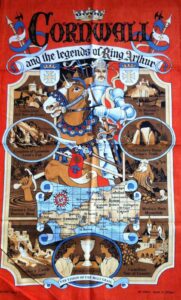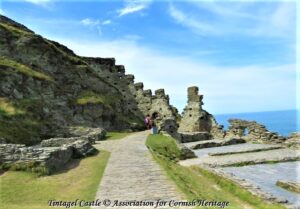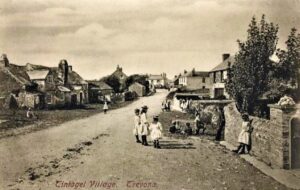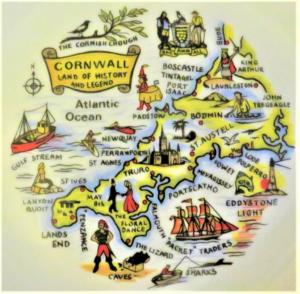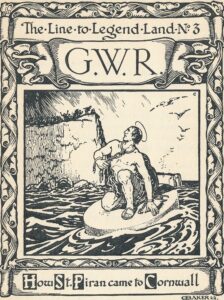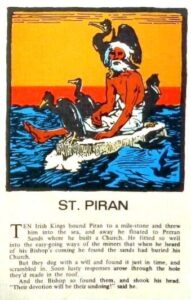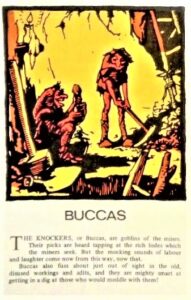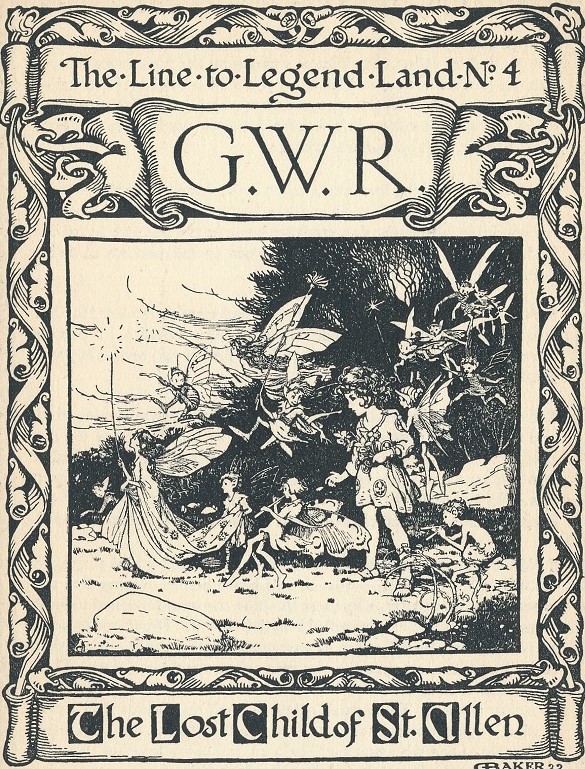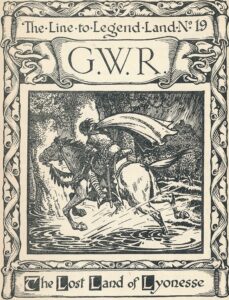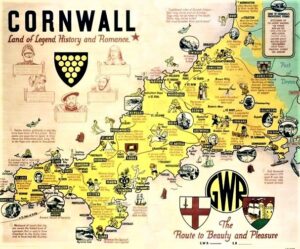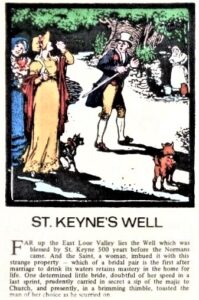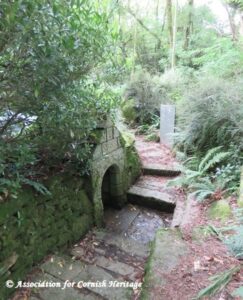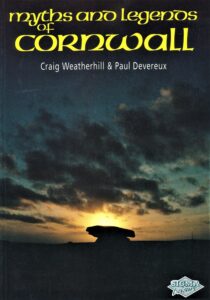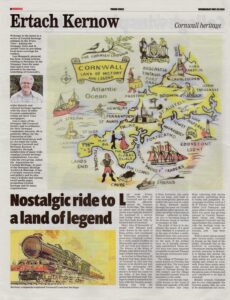Nostalgic Ride to a Land of Legend
Last week Prince Charles the Duke of Cornwall and his wife Camilla officially opened the Tintagel Castle footbridge. The island on which part of the castle stands was originally joined to the mainland by a narrow land bridge when the castle was first built from 1233, by Richard Earl of Cornwall. Many tens of thousands of people visit Tintagel each years drawn by the myth of King Arthur now considered by historians primarily a great story. Originally written by a cleric named Geoffrey of Monmouth and completed in 1138, his book now known as ‘The History of the Kings of Britain’ tells that it was at Tintagel Arthur was conceived.
As brother to King Henry III Richard had been made Earl of Cornwall in 1225 and was known to be shrewd and well read. On exchanging this rocky headland for three manors he built the castle we see today. It has been suggested that Richard built Tintagel to create a connection for him with the Cornish people, linking him with the Arthurian history as they saw it then. Certainly, the castle was not large, well built or even strategically placed and within 100 years was in a state of decay. Richard mainly through his taxes on Cornish tin and his other interests became one of the richest men in Europe sufficient to bribe his way to becoming King of the Romans based at Aachen in Germany in 1256.
The point of this is to emphasise the power of a good story whether it is history or in the case of Arthur a myth. Richard knew this and many others would make their name on the back of the Arthur story as it became increasingly embellished. These stories have now been exported around the world and Tintagel has become well known internationally.
The village of Tintagel, formerly known as Trevena, has embraced this. The local post office changing the village name to Tintagel during the 19th century and the village has benefited greatly from its proximity to the castle.
Cornwall has become especially known as the ‘Land of Myths and Legends’ with 19th century writers like John Hunt collecting folk stories and myths, publishing them in books and pamphlets. Increasingly as artists, such as J M W Turner, Poet Laureate Alfred Lord Tennyson and many others visited Cornwall there was great and growing interest in Cornish themes. Many towns and villages throughout Cornwall saw the opportunities this created and rode the heritage train encouraging growth of tourism, jobs and their towns.
With so many places named after various saints, Cornwall is known as the land of the saints. Cornwall was at the forefront of conversion to Christianity during the 5th to 7th centuries in Britain. It is during this period, the ‘Age of Saints’ that many of these saints are said to have visited and settled in Cornwall. From these saints many myths abound and the most well-known is that of St Piran, the patron saint of tinners and now considered to be that of Cornwall.
Besides Ireland, Cornwall has its own ‘little people’ the Cornish piskie, who are said to be mischievous not necessarily either good or evil, they have their Queen known as Joan the Wad. There were the Knocker’s and Bucca’s that inhabited the mines and who were often sea spirits and believed in by miners and fishermen. The mischievous Cornish Pixies even appeared in the 1992 Harry Potter film ‘Harry Potter and the Chamber of Secrets’.
By the 1920’s companies such as the Great Western Railway were using the collected stories and myths as a way of promoting business, publishing a series of leaflets entitled ‘The Line to Legend Land’, of the 24 published 12 related to Cornwall. These included stories of saints, Cornwall’s own little folk and of course giants of which many stories are told. One of these include the story of how the Cheesewring was created during a contest between St Tue and the giant Uther and other stories relating to ancient stone lines and circles where men and maidens were turned to stone by saints for having too much fun on a Sunday.
Today many tourists visit Cornwall for its unique combination of heritage, which includes its language, its dialect and its historic and ancient sites that are often included as part of Cornwall’s historic myths and legends. Whole industries have been built around just this aspect of Cornish heritage. There are of course the tea towels, maps on ceramics, Cornish piskie ornaments, Joan the Wad lucky charms and lots more. Much might be considered tourist tat, but for people and businesses using the strength of Cornwall’s myths going back to Arthur it has brought wealth just as it did to help Richard Earl of Cornwall.
I must this week make mention of Craig Weatherhill, who sadly passed away last week. Through his many endeavours Craig contributed to strengthening Cornwall’s identity, preserving Cornish heritage and sharing knowledge about Cornwall in many ways. Craig’s interest in Cornwall’s heritage was sparked by being given a first edition of John Hunt’s book on Cornish legends at aged 8. A fine example of how once again Cornwall’s myths and legends have indirectly improved the lives of huge numbers of people and Cornish heritage through Craig Weatherhill’s tremendous work and love of Cornwall. Craig will be long remembered with great respect and much affection.
